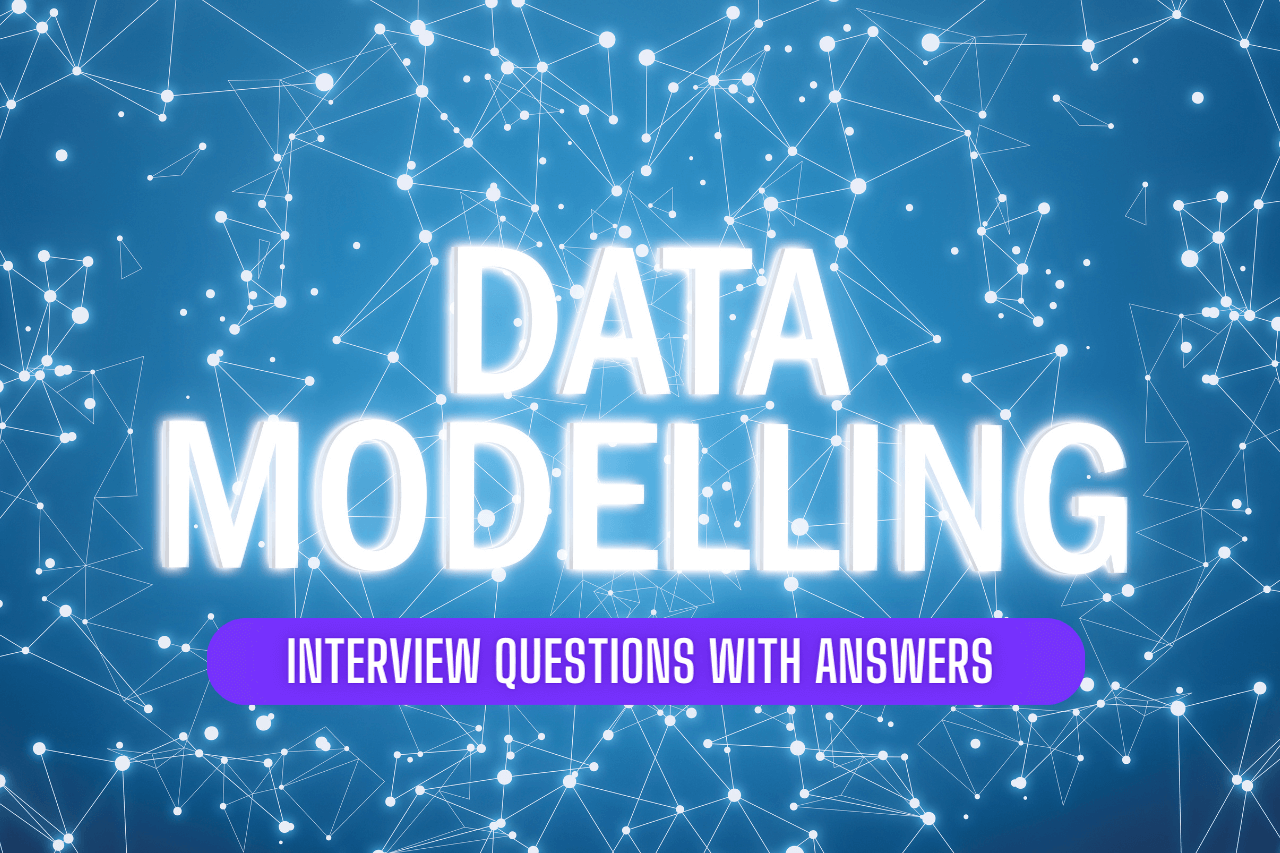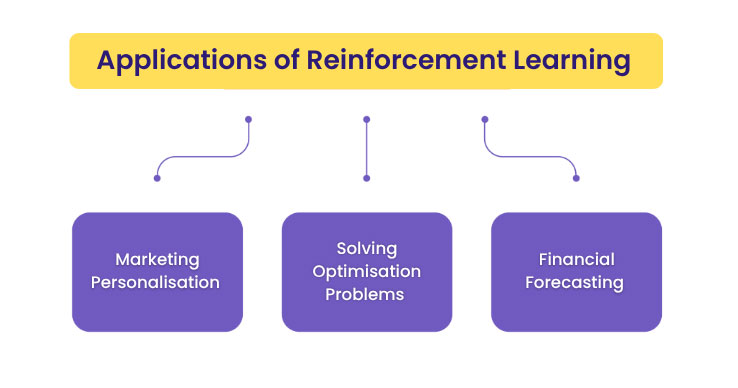Data modeling is a crucial aspect of data science, enabling organizations to organize, analyze, and understand their data effectively. Aspiring data professionals seeking jobs in this field should prepare well for data modeling interviews.
In this article, we will explore the top 10 most frequently asked data modeling interview questions along with detailed answers to help you ace your interview. So, let’s dive right in!
10 Most Asked Data Modeling Interview Questions for 2025
1. What is Data Modelling?
Data modeling is the process of creating a visual representation of data structures and relationships, aiding in the organization and understanding of complex datasets. It involves the use of data modeling techniques to design databases and ensure data integrity, consistency, and accessibility.
2. Why is Data Modelling Important in Data Science?
Data modeling plays a crucial role in data science as it helps in optimizing data storage, facilitating efficient querying, and improving overall data analysis. By creating a structured model, data scientists can gain valuable insights from data, which forms the foundation for making informed business decisions.
You’re reading the article, Top 10 Most Asked Data Modeling Interview Questions & Their Answers.
3. Explain the Key Steps in Data Modelling.
The data modeling process typically involves the following steps:
a. Requirement Gathering: Understanding the data needs and objectives of the organization.
b. Conceptual Data Modelling: Creating a high-level representation of data entities and their relationships.
c. Logical Data Modelling: Defining detailed entity attributes, keys, and relationships.
d. Physical Data Modelling: Designing the actual database structure for implementation.
e. Validation and Optimization: Ensuring the accuracy, efficiency, and effectiveness of the data model.
4. What are the Common Data Modelling Tools?
Several data modeling tools are available to streamline the modeling process, such as ER/Studio, Microsoft Visio, Lucidchart, and IBM InfoSphere Data Architect. These tools offer a user-friendly interface to create, modify, and visualize data models efficiently.
5. Differentiate Between Conceptual, Logical, and Physical Data Models.
- Conceptual Data Model: It provides an abstract representation of the entire data infrastructure, highlighting the main data entities and their relationships, irrespective of technical constraints.
- Logical Data Model: This model defines the data entities, attributes, and relationships in detail, without considering the physical database design.
- Physical Data Model: It specifies the actual database schema, including tables, columns, data types, and constraints.
You’re reading the article, Top 10 Most Asked Data Modeling Interview Questions & Their Answers.
6. How Does Data Modelling Enhance Power BI?
In Power BI, data modeling is essential to create meaningful relationships between different data tables. By establishing these relationships, Power BI can generate accurate insights, reports, and visualizations, enabling users to make data-driven decisions effectively.
7. What are the Essential Data Modelling Concepts?
a. Entity-Relationship (ER) Diagrams: These diagrams visually represent data entities and their associations, aiding in the understanding of data structures.
b. Normalization: It is a technique used to organize data into separate tables to eliminate redundancy and improve data integrity.
c. Indexing: Indexes enhance database query performance by allowing faster data retrieval based on indexed columns.
d. Denormalization: This process involves combining tables to optimize query performance and simplify data retrieval.
You’re reading the article, Top 10 Most Asked Data Modeling Interview Questions & Their Answers.
8. How can one Learn Data Modelling?
There are various online courses for data modeling available, and one can also learn data modeling in data science institutes like the best data science institute in Noida. Additionally, individuals can learn data modeling techniques through Python online courses, which offer a practical approach to data handling and manipulation.
9. Discuss the Role of Data Modelling in Python for Data Science.
In Python, data modeling is primarily performed using libraries like Pandas, which offer powerful data structures and functions to manipulate and analyze data effectively. Python’s versatility and ease of use make it a popular choice for data scientists to create robust data models and gain valuable insights.
10. How Does Data Modelling Contribute to Effective Decision Making?
Data modeling enables organizations to organize their data coherently, leading to better analysis and insights. By visualizing data relationships, decision-makers can identify trends, patterns, and correlations, allowing them to make data-driven decisions with confidence.
You’re reading the article, Top 10 Most Asked Data Modeling Interview Questions & Their Answers.
3 Technical Data Modelling Interview Questions With Solutions
Question: Implement a One-to-Many Relationship in Python using Pandas?
Answer: In data modeling, a one-to-many relationship is a common scenario where one entity is related to multiple entities in another table. Let’s demonstrate this using Pandas:
import pandas as pd
# Sample data
orders_data = {'order_id': [1, 2, 3, 4],
'customer_id': [101, 102, 101, 103],
'order_date': ['2023-01-01', '2023-02-01', '2023-02-15', '2023-03-01']}
order_details_data = {'order_id': [1, 1, 2, 3, 3, 3],
'product_id': [201, 202, 203, 204, 205, 206],
'quantity': [2, 1, 3, 1, 2, 2]}
# Create DataFrame for orders and order details
orders_df = pd.DataFrame(orders_data)
order_details_df = pd.DataFrame(order_details_data)
# Merge DataFrames to create one-to-many relationship
merged_df = pd.merge(orders_df, order_details_df, on='order_id')
print(merged_df)You’re reading the article, Top 10 Most Asked Data Modeling Interview Questions & Their Answers.
Question: How to Normalize Data in SQL?
Answer: Normalization is a critical data modeling concept that involves organizing data to minimize redundancy and improve data integrity. In SQL, normalization can be achieved using multiple tables and relationships. Let’s normalize a hypothetical product table:
-- Original Product Table
CREATE TABLE products (
product_id INT PRIMARY KEY,
product_name VARCHAR(100),
category VARCHAR(50),
price DECIMAL(10, 2),
supplier_id INT
);
-- Create Supplier Table
CREATE TABLE suppliers (
supplier_id INT PRIMARY KEY,
supplier_name VARCHAR(100),
contact_email VARCHAR(100)
);
-- Normalize the product table by removing the category and supplier details
-- Create a new table to store product-category relationship
CREATE TABLE product_categories (
category_id INT PRIMARY KEY,
category_name VARCHAR(50)
);
-- Update the product table to reference the category_id and supplier_id
ALTER TABLE products
ADD COLUMN category_id INT,
ADD CONSTRAINT fk_category
FOREIGN KEY (category_id)
REFERENCES product_categories (category_id);
-- Add Supplier_id as a foreign key in the products table
ALTER TABLE products
ADD CONSTRAINT fk_supplier
FOREIGN KEY (supplier_id)
REFERENCES suppliers (supplier_id);You’re reading the article, Top 10 Most Asked Data Modeling Interview Questions & Their Answers.
Question: Implement a Many-to-Many Relationship in Python using Pandas?
Answer: In data modeling, a many-to-many relationship occurs when multiple records in one table are related to multiple records in another table. We can represent this using a bridge table. Let’s demonstrate this using Pandas:
import pandas as pd
# Sample data
students_data = {'student_id': [1, 2, 3, 4],
'student_name': ['Alice', 'Bob', 'Charlie', 'David']}
courses_data = {'course_id': [101, 102, 103],
'course_name': ['Math', 'Science', 'History']}
student_courses_data = {'student_id': [1, 1, 2, 3, 3],
'course_id': [101, 102, 101, 102, 103]}
# Create DataFrame for students, courses, and student courses
students_df = pd.DataFrame(students_data)
courses_df = pd.DataFrame(courses_data)
student_courses_df = pd.DataFrame(student_courses_data)
# Merge DataFrames to create many-to-many relationship
merged_df = pd.merge(student_courses_df, students_df, on='student_id')
merged_df = pd.merge(merged_df, courses_df, on='course_id')
print(merged_df)Conclusion
Data modeling is an indispensable aspect of data science, providing a structured framework for data organization and analysis. By mastering data modeling concepts and techniques you can enroll Console Flare data science course with Powerbi, aspiring data professionals can excel in interviews and secure promising positions in the ever-expanding field of data science.
Keep learning, stay updated with the latest tools and trends, and embrace the power of data modeling to unlock the true potential of data-driven decision-making.
Hope you liked reading the article, Top 10 Most Asked Data Modeling Interview Questions & Their Answers. Please share your thoughts in the comments section below.
For more such content and regular updates, follow us on Facebook, Instagram, LinkedIn








